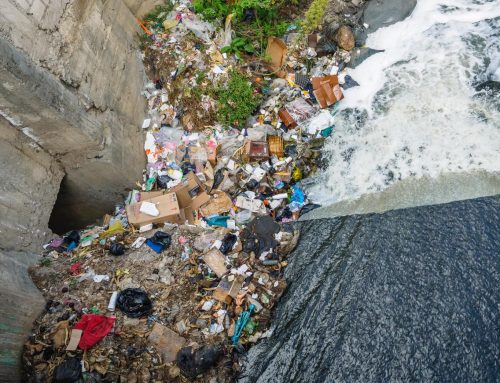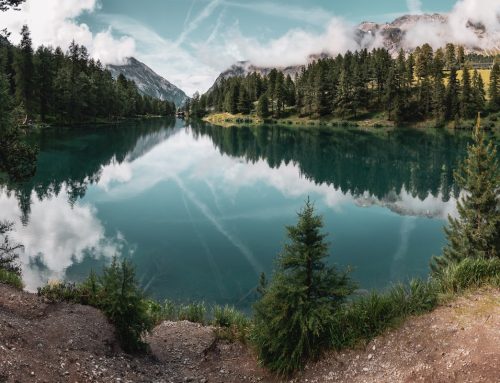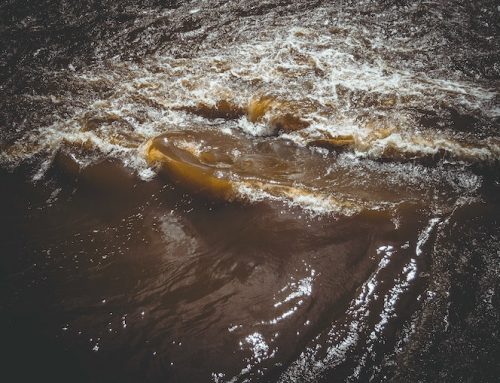[fusion_builder_container hundred_percent=”no” hundred_percent_height=”no” hundred_percent_height_scroll=”no” hundred_percent_height_center_content=”yes” equal_height_columns=”no” menu_anchor=”” hide_on_mobile=”small-visibility,medium-visibility,large-visibility” status=”published” publish_date=”” class=”” id=”” border_color=”” border_style=”solid” margin_top=”” margin_bottom=”” padding_top=”” padding_right=”” padding_bottom=”” padding_left=”” gradient_start_color=”” gradient_end_color=”” gradient_start_position=”0″ gradient_end_position=”100″ gradient_type=”linear” radial_direction=”center center” linear_angle=”180″ background_color=”” background_image=”” background_position=”center center” background_repeat=”no-repeat” fade=”no” background_parallax=”none” enable_mobile=”no” parallax_speed=”0.3″ background_blend_mode=”none” video_mp4=”” video_webm=”” video_ogv=”” video_url=”” video_aspect_ratio=”16:9″ video_loop=”yes” video_mute=”yes” video_preview_image=”” filter_hue=”0″ filter_saturation=”100″ filter_brightness=”100″ filter_contrast=”100″ filter_invert=”0″ filter_sepia=”0″ filter_opacity=”100″ filter_blur=”0″ filter_hue_hover=”0″ filter_saturation_hover=”100″ filter_brightness_hover=”100″ filter_contrast_hover=”100″ filter_invert_hover=”0″ filter_sepia_hover=”0″ filter_opacity_hover=”100″ filter_blur_hover=”0″ admin_label=”Main Body Text 1″ admin_toggled=”yes” type=”legacy”][fusion_builder_row][fusion_builder_column type=”1_1″ layout=”1_1″ spacing=”” center_content=”no” link=”” target=”_self” min_height=”” hide_on_mobile=”small-visibility,medium-visibility,large-visibility” class=”” id=”” hover_type=”none” border_color=”” border_style=”solid” border_position=”all” border_radius=”” box_shadow=”no” dimension_box_shadow=”” box_shadow_blur=”0″ box_shadow_spread=”0″ box_shadow_color=”” box_shadow_style=”” padding_top=”” padding_right=”” padding_bottom=”” padding_left=”” margin_top=”” margin_bottom=”” background_type=”single” gradient_start_color=”” gradient_end_color=”” gradient_start_position=”0″ gradient_end_position=”100″ gradient_type=”linear” radial_direction=”center center” linear_angle=”180″ background_color=”” background_image=”” background_image_id=”” background_position=”left top” background_repeat=”no-repeat” background_blend_mode=”none” animation_type=”” animation_direction=”left” animation_speed=”0.3″ animation_offset=”” filter_type=”regular” filter_hue=”0″ filter_saturation=”100″ filter_brightness=”100″ filter_contrast=”100″ filter_invert=”0″ filter_sepia=”0″ filter_opacity=”100″ filter_blur=”0″ filter_hue_hover=”0″ filter_saturation_hover=”100″ filter_brightness_hover=”100″ filter_contrast_hover=”100″ filter_invert_hover=”0″ filter_sepia_hover=”0″ filter_opacity_hover=”100″ filter_blur_hover=”0″ last=”true” border_sizes_top=”0″ border_sizes_bottom=”0″ border_sizes_left=”0″ border_sizes_right=”0″ first=”true”][fusion_title title_type=”text” rotation_effect=”bounceIn” display_time=”1200″ highlight_effect=”circle” loop_animation=”off” highlight_width=”9″ highlight_top_margin=”0″ before_text=”” rotation_text=”” highlight_text=”” after_text=”” hide_on_mobile=”small-visibility,medium-visibility,large-visibility” sticky_display=”normal,sticky” class=”” id=”” content_align_medium=”” content_align_small=”” content_align=”center” size=”4″ font_size=”” animated_font_size=”” fusion_font_family_title_font=”” fusion_font_variant_title_font=”” line_height=”” letter_spacing=”” text_shadow=”no” text_shadow_vertical=”” text_shadow_horizontal=”” text_shadow_blur=”0″ text_shadow_color=”” margin_top_medium=”” margin_bottom_medium=”” margin_top_small=”” margin_bottom_small=”” margin_top=”” margin_bottom=”” margin_top_mobile=”” margin_bottom_mobile=”” text_color=”” animated_text_color=”” highlight_color=”” style_type=”default” sep_color=”” animation_type=”” animation_direction=”left” animation_speed=”0.3″ animation_offset=””]
What Can We Do To Decrease Plastic Pollution?
[/fusion_title][fusion_text columns=”” column_min_width=”” column_spacing=”” rule_style=”default” rule_size=”” rule_color=”” content_alignment_medium=”” content_alignment_small=”” content_alignment=”” hide_on_mobile=”small-visibility,medium-visibility,large-visibility” sticky_display=”normal,sticky” class=”” id=”” font_size=”” fusion_font_family_text_font=”” fusion_font_variant_text_font=”” line_height=”” letter_spacing=”” text_color=”” animation_type=”” animation_direction=”left” animation_speed=”0.3″ animation_offset=””]There are many misconceptions about the plastic pollution problem, but there is no question that in its many forms, plastic is killing ocean wildlife that is vital to the ecosystem. In addition, plastic pollution is sickening land flora and fauna, including humans.
Miranda Wang and Jeanny Yao were two of the youngest scientists ever to win the Perlman science prize in 2016 for developing a bacterium that may transform plastic into CO2 and water. Although they were not the first ones to discover that bacteria can break down phthalates, they were the first to find a possible solution to a local problem by looking into their own river system in Vancouver, Canada when they were still in high school.1
The two have since won numerous other science awards and established their company, BioCellection. Years of research later, their company is still focused on taking a main type of plastic, polyethylene, and turning it into chemical building blocks for new products that don’t end up in oceans as waste. The firm takes dicarboxylic acid it generates from polyethylene and transforms it into high-performance materials, such as photopolymers or polyyrethane.2
“It is such a waste when materials that are perfectly good to be reused or repurposed end up as pollution,” Yao says. “Not only are we turning this currently wasted carbon into new materials that are high performing, but BioCellection is also making new products that can be recycled over and over again.”3
Since 2016, a product called the SeaBin has been available for purchase around the world. Created by two Australian surfers, the SeaBin is a bucket with a pump and water filtration system that is designed to suck in any floating trash into a removable mesh bag. The bucket includes an optional oil-water separator system that will pull oil right out of the ocean, then spit out cleaner water through the other side of the pump. The SeaBin can be installed at any floating dock to suck up trash or oil floating in nearby harbors.4
Since 2017, the SeaBin Project has removed over 1,400 tons of plastic pollution from the world’s oceans with SeaBin units in 53 countries. Each unit has the capability to collect 90,000 plastic bags, 35,700 disposable cups, 16,500 plastic bottles and 166,500 plastic utensils each year.5
Removal of plastic from the ocean is only one piece of the pollution puzzle. What happens to all the plastic that is collected? Not all of the tons and tons of plastic can be transformed into usable products in the way of BioCellection. Much of the plastic waste has to decompose. Just as plastic was a wonderful invention due to its durability, it’s also a nightmare when it comes to decomposition, as it can take 1,000 years!
Leave it to yet another Canadian high school student to find a way to more quickly biodegrade plastic! Daniel Burd, a student at Waterloo Collegiate Institute won the Canada-Wide Science Fair in May of 2019. He created a process of immersing ground plastic in a yeast solution that expedites microbial growth, then isolating the productive organisms. After experimentation with different strains and interbreeding them, Burd achieved a 43% degradation of plastic in only six weeks!6
What makes Burd’s discoveries so exciting is that his method of decomposing plastic is organic. Other research on decomposing plastic has mainly focused on chemical additives made by scientists to cause plastic to vaporize.7 Testing needs to continue with Burd’s discoveries to ensure that byproducts of organic decomposition are not carcinogenic, but what a great starting point!
We can’t all be scientific entrepreneurs and make breakthrough discoveries, but every single one of us can help in decreasing plastic pollution by remembering to practice the 3Rs: reuse, reduce and recycle.
Water is Life and Nikken is doing its part to help people access clean water for Active Wellness—not only for drinking, but also for bathing. For the entire month of March, we are offering four Water Packs. Each pack has two state-of-the-art PiMag® products. You get one at the regular price and the second at 50% off! You have your choice of two PiMag MicroJet® Wall Mount Shower Systems, two PiMag MicroJet® Handheld Shower Systems, two PiMag® Sport Bottles of 100% recyclable biogreen materials, or two PiMag® Waterfalls.[/fusion_text][/fusion_builder_column][/fusion_builder_row][/fusion_builder_container][fusion_builder_container hundred_percent=”no” hundred_percent_height=”no” hundred_percent_height_scroll=”no” hundred_percent_height_center_content=”yes” equal_height_columns=”no” menu_anchor=”” hide_on_mobile=”small-visibility,medium-visibility,large-visibility” status=”published” publish_date=”” class=”” id=”” border_color=”” border_style=”solid” margin_top=”25px” margin_bottom=”” padding_top=”” padding_right=”” padding_bottom=”” padding_left=”” gradient_start_color=”” gradient_end_color=”” gradient_start_position=”0″ gradient_end_position=”100″ gradient_type=”linear” radial_direction=”center center” linear_angle=”180″ background_color=”” background_image=”” background_position=”center center” background_repeat=”no-repeat” fade=”no” background_parallax=”none” enable_mobile=”no” parallax_speed=”0.3″ background_blend_mode=”none” video_mp4=”” video_webm=”” video_ogv=”” video_url=”” video_aspect_ratio=”16:9″ video_loop=”yes” video_mute=”yes” video_preview_image=”” filter_hue=”0″ filter_saturation=”100″ filter_brightness=”100″ filter_contrast=”100″ filter_invert=”0″ filter_sepia=”0″ filter_opacity=”100″ filter_blur=”0″ filter_hue_hover=”0″ filter_saturation_hover=”100″ filter_brightness_hover=”100″ filter_contrast_hover=”100″ filter_invert_hover=”0″ filter_sepia_hover=”0″ filter_opacity_hover=”100″ filter_blur_hover=”0″ admin_toggled=”yes” type=”legacy”][fusion_builder_row][fusion_builder_column type=”1_1″ layout=”1_1″ spacing=”” center_content=”no” link=”” target=”_self” min_height=”” hide_on_mobile=”small-visibility,medium-visibility,large-visibility” class=”” id=”” hover_type=”none” border_color=”” border_style=”solid” border_position=”all” border_radius=”” box_shadow=”no” dimension_box_shadow=”” box_shadow_blur=”0″ box_shadow_spread=”0″ box_shadow_color=”” box_shadow_style=”” padding_top=”” padding_right=”” padding_bottom=”” padding_left=”” margin_top=”” margin_bottom=”” background_type=”single” gradient_start_color=”” gradient_end_color=”” gradient_start_position=”0″ gradient_end_position=”100″ gradient_type=”linear” radial_direction=”center center” linear_angle=”180″ background_color=”” background_image=”” background_image_id=”” background_position=”left top” background_repeat=”no-repeat” background_blend_mode=”none” animation_type=”” animation_direction=”left” animation_speed=”0.3″ animation_offset=”” filter_type=”regular” filter_hue=”0″ filter_saturation=”100″ filter_brightness=”100″ filter_contrast=”100″ filter_invert=”0″ filter_sepia=”0″ filter_opacity=”100″ filter_blur=”0″ filter_hue_hover=”0″ filter_saturation_hover=”100″ filter_brightness_hover=”100″ filter_contrast_hover=”100″ filter_invert_hover=”0″ filter_sepia_hover=”0″ filter_opacity_hover=”100″ filter_blur_hover=”0″ last=”true” border_sizes_top=”0″ border_sizes_bottom=”0″ border_sizes_left=”0″ border_sizes_right=”0″ first=”true”][fusion_text columns=”” column_min_width=”” column_spacing=”” rule_style=”default” rule_size=”” rule_color=”” content_alignment_medium=”” content_alignment_small=”” content_alignment=”” hide_on_mobile=”small-visibility,medium-visibility,large-visibility” sticky_display=”normal,sticky” class=”” id=”” font_size=”” fusion_font_family_text_font=”” fusion_font_variant_text_font=”” line_height=”” letter_spacing=”” text_color=”” animation_type=”” animation_direction=”left” animation_speed=”0.3″ animation_offset=””]
Sources:
- https://www.thescienceandspace.com/2019/05/the-high-pollution-in-the-oceans-is-big.html
- http://www.intellingentliving.co/amp/students-recycle-polyethylene
- https://cen.acs.org/environment/recylcing/BioCellection-Miranda-Wang-and-Jeanny-Yao-aim-to-make-treasure-out-of-plastic-trash/98/19
- https://mitte.co/2018/02/13/water-related-technologies-inventions-inspire-us/
- https://seabinproject.com/discovery-australia-joins-seabin-project-to-help-clean-up-sydney-harboru-in-world-first-program/
- https://www.treehugger.com/boy-discovers-microbe-that-easts-plastic-4868136
- https://www.treehugger.com/boy-discovers-microbe-that-easts-plastic-4868136
[/fusion_text][/fusion_builder_column][/fusion_builder_row][/fusion_builder_container]







Leave A Comment